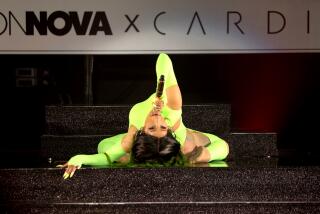The Jewel City’s 24-carat future
“Life. Style. Caruso.”
A wood fence, bearing that three-word staccato declaration several times over, surrounds a buzzing 16-acre construction site in downtown Glendale. The phrase is an easy one to recall, thanks less to its brevity than to the fact I’ve spent at least a day’s worth of my life gazing at it while stuck in the gridlock of Brand Boulevard.
For the gridlock I have none other to thank than patrons of the Glendale Galleria, an imposing roofed retail compound adjacent to the fenced-in construction site. Across the street from the galleria and construction site is another, smaller outdoor mall, whose tenants include a movie theater and a few restaurants. A third, less successful retail centerThe Exchangeis a five-minute walk away.
And the construction site? By next spring, the dirt pile will be Americana at Brand, downtown Glendale’s fourthfourth!retail center. Who has the audacity to plunge some serious coin ($320 million, that is) into a 16-acre open-air mall that all but shares a wall with one of Southern California’s biggest gallerias? Most interestingly, who would build a high-end shopping center in Glendale?
This is where the “Caruso” after “life” and “style” comes in. Americana won’t mimic the neighboring super-size galleria; instead, it will be similar to The Grove, an outdoor “lifestyle center” in L.A.’s Fairfax District built by Rick Caruso. Americana, also Caruso’s project, will include hundreds of condos and apartments and has already lured an upscale troupe of retailers, none of which currently do business in the adjacent galleria.
But an upscale “lifestyle center” in Glendale? My suburban hometown?
Growing up in Glendale during the 1980s and ‘90s, such a prospect was unthinkable. Sure, the city has always been home to a strong corporate culture; during elementary school, I watched all 21 floors of Nestle’s U.S. headquarters go up downtown, dwarfing the lower-lying office buildings. But as for retail, the only serious game in town was the formidable yet drab galleria. If you wanted upscale or “lifestyle,” you spent a day in Old Town Pasadena or even downtown Burbank’s Media Center, but not in Glendaleand that was fine.
But perhaps Glendale’s old reputation as a monolithic bedroom community should be reconsidered. Indeed, the 2000 Census counted more than half of Glendale’s residents as foreign-born; my own grandparents arrived there from Norway in the 1950s. Doubtless the Glendale they settled in bore little resemblance to the 200,000-plus resident city of today. But I can’t help but think that Glendale’s turnaround from a bedroom community to a budding high-end retail hub has followed the immigrant narrative of so many of its residents, including my grandparents: The first generation works intensely and lives modestly so that later generations can flourish. In that sense, a flashy, cutting-edge development in a dynamic city that is home to generations of immigrant families makes sense.
Surely, Caruso had more dollars-and-cents reasons in choosing Glendale for his $320 million risk. But the immigration-colored history and evolution of Glendale over the last several decades provides some context to the city’s makeover from boring suburbia to retail powerhousethe kind that can support its own version of The Grove. When it opens next year, perhaps I’ll treat my mor-mor (Norwegian for “mother’s mother”) to a movie at Americana.
Paul Thornton is a researcher for the Editorial Pages department. Send us your thoughts at [email protected].
More to Read
A cure for the common opinion
Get thought-provoking perspectives with our weekly newsletter.
You may occasionally receive promotional content from the Los Angeles Times.











